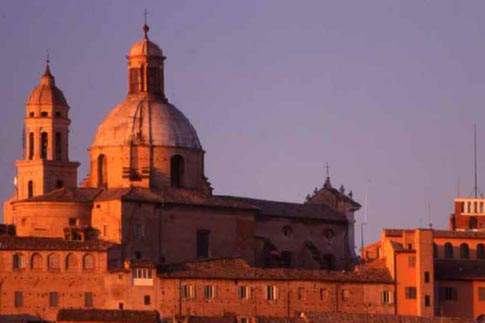Macerata is known across the world for its annual open-air opera festival, taking place in its open-air Arena Sferisterio – a neo-classical arena erected by private subscription in the 1820’s. Its centre was almost entirely built between the 16th and 19th centuries. The Renaissance two-tiered arcades of the Loggia dei Mercanti on central Piazza della Libertà is the town’s most striking piece of architecture. The best of the city’s palaces line Corso Matteotti, the road that leaves the square at the side of the Loggia, while Corso della Repubblica leads to Piazza Vittorio Veneto where stands Palazzo Ricci. The Palazzo Buonaccorsi was built in 1700-1720 thanks to Raimondo Buonaccorsi and his son Cardinal Simone Buonaccorsi using designs by Giovanni Battista Contini. The piano nobile is known for the Sala dell’Eneide, decorated with the most impressive frescoes by Rambaldi, Dardani, Solimena and canvases by Garzi and Giovanni Gioseffo dal Sole. The building also houses the Museo delle Carrozze, where fine carriages can be admired. The cathedral was built in Neoclassical style in 1771- 1790; it has the remains of a 15th century Gothic bell tower. Macerata boasts a very old University, which was founded in 1290.










